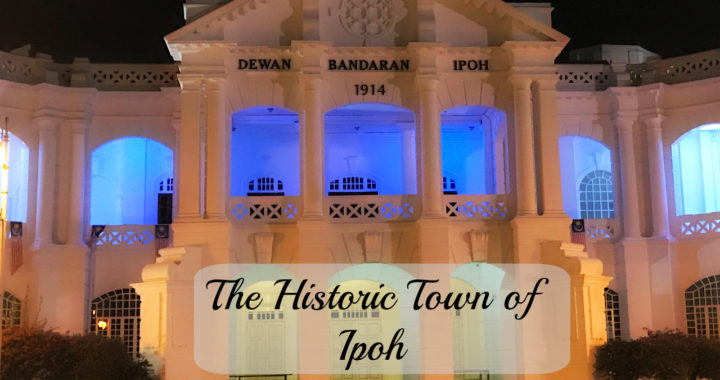Ipoh – Certainly a Destination
You can be excused if you haven’t heard of Ipoh (pronounced e-pou).
When researching how we best get to Cameron Highlands, Ipoh came up as a place to disembark the train from the border crossing at Pedang Besar.
It was approximately 2.5hr train trip from the Thai/Malay border and it is 180km north of Kuala Lumpur.
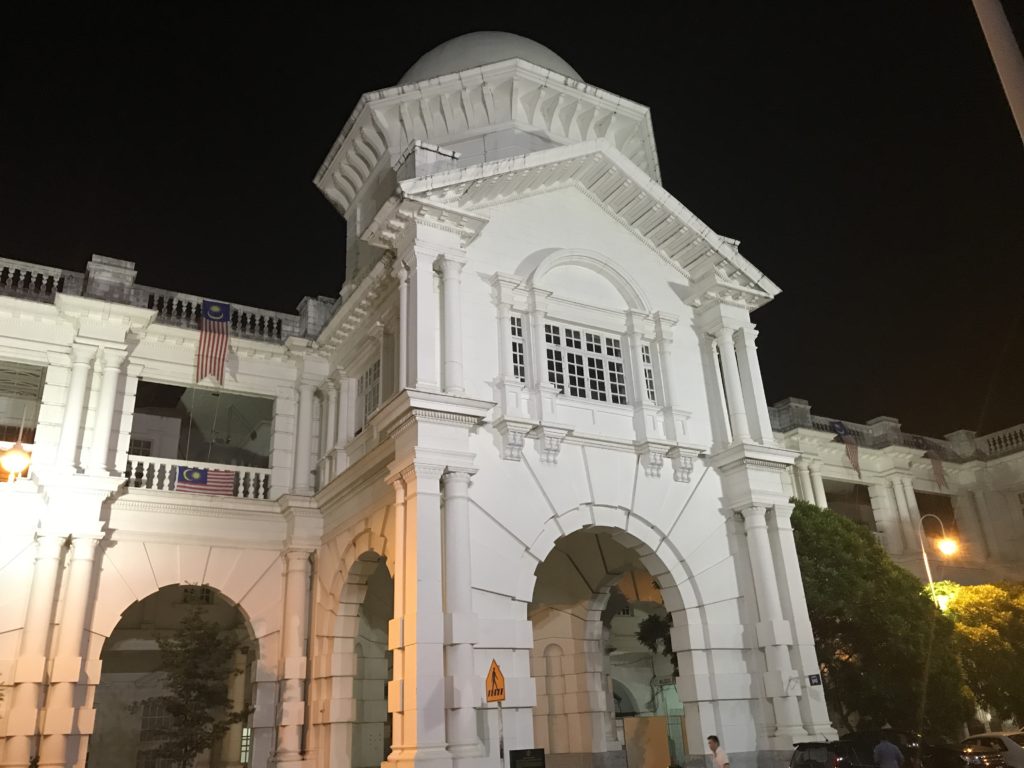
The historic Ipoh Railway Station was formerly a hospital
As we didn’t arrive until late afternoon it would have meant a rather late arrival in the Cameron Highlands after a 3 hour bus trip. This didn’t seem very attractive option so we started to research Ipoh for an overnight stay.
The more we researched, the more we thought that we could stay a bit longer in this town.
So Much to Offer
Ipoh is the third largest city in Malaysia.
It began as a village but grew rapidly in the 1880’s following the discovery of tin in the local area. This discovery attracted tin miners from all areas of SE Asia and made it one of the richest cities in Malaysia. The supply of tin dwindled by the 1970’s and so the city suffered decades of decline and neglect.
In recent years however, Ipoh’s popularity as a tourist destination has been boosted by its efforts to conserve its British colonial-era architecture. It is also well-known for its cuisine which of course is always a draw card for us.
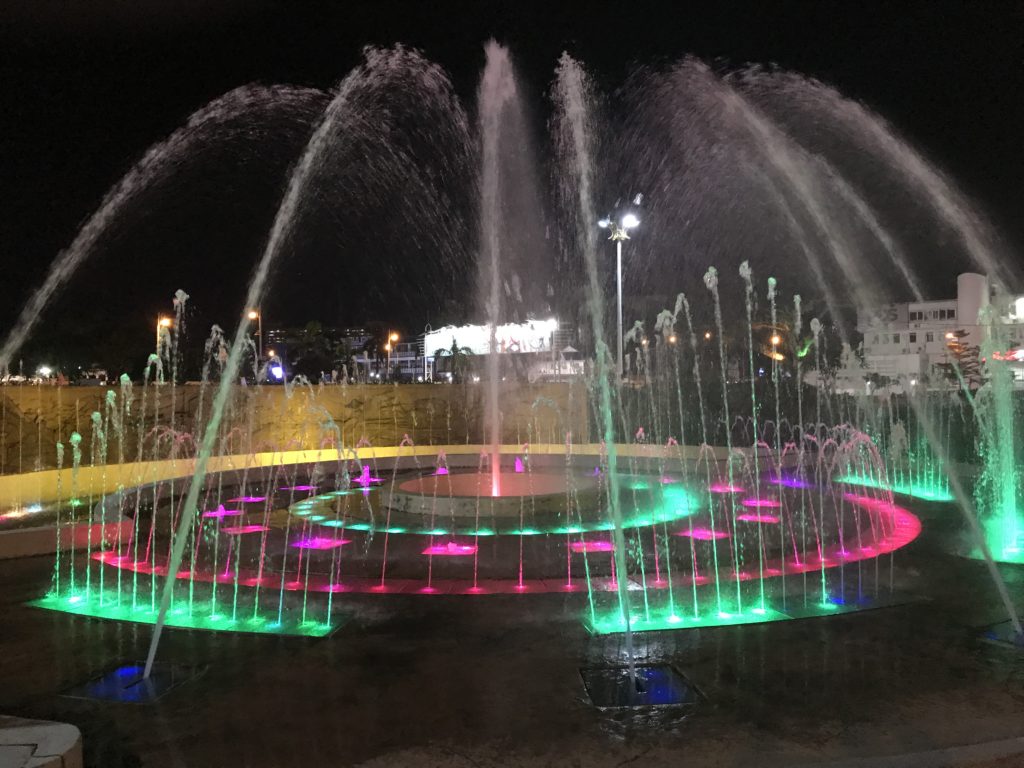
The colourful fountain at night with the Town Hall as a backdrop
The surrounding area has impressive limestone hills and caves where Buddhist temples are built.
Ipoh has managed to maintain its reputation as one of the cleanest cities in Malaysia. This is definitely something we certainly appreciated.
Accommodation
We made an initial booking of 2 nights at a Guest House called 27 Concubine Lane. This turned into 4 nights as we discovered more things to see. Cost per night 100MYR ($32nz) per night.
This is a restored 120 year old Chinese family house. It has been beautifully finished with wooden flooring (yes, they do creak and they are thin), antique doors and windows.
Facilities are basic with shared bathrooms, kitchen facilities and shared lounge area. We did have A/C and WiFi which we always appreciate. All this aside, you cannot go past the history within these walls. The atmosphere and our surroundings gave us a taste of the ‘real’ Ipoh – and isn’t that what travel is all about?
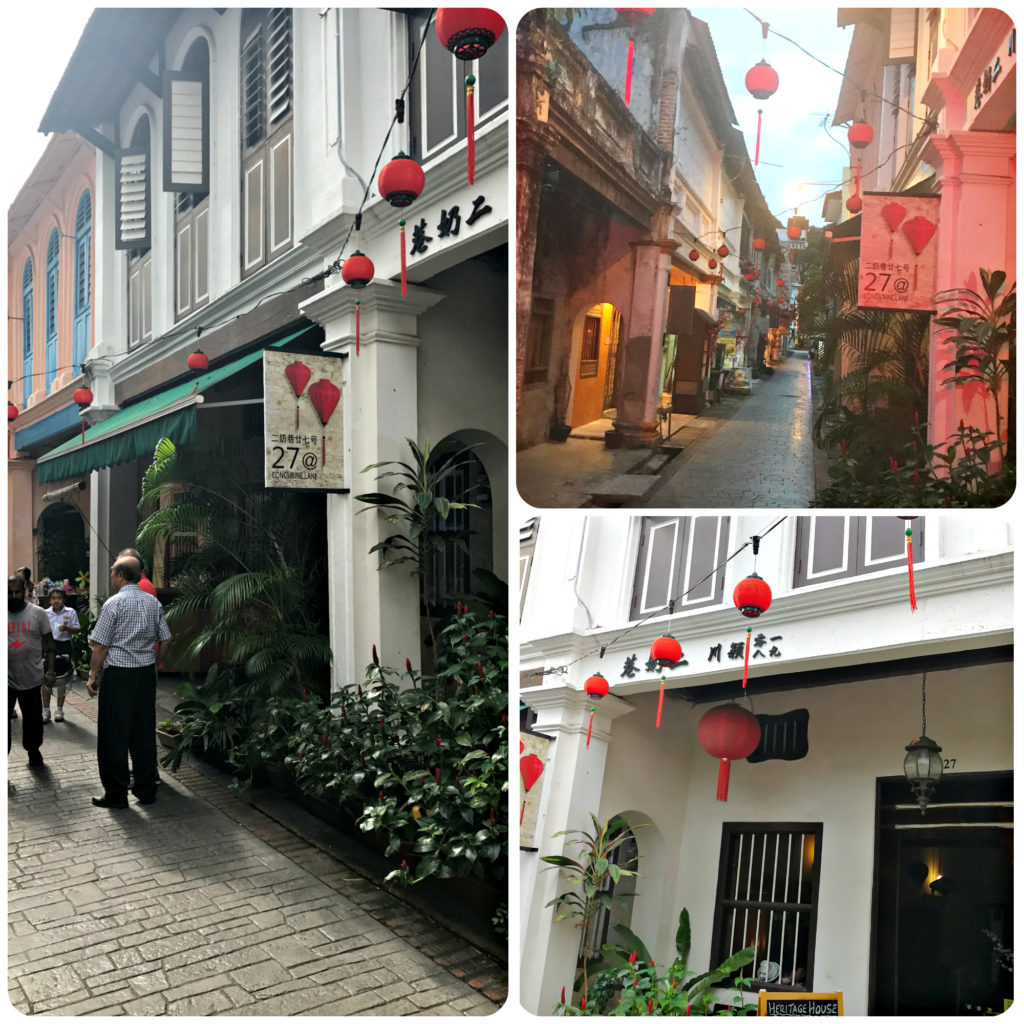
Our delightful 120 year old restored Chinese Shophouse
Concubine Lane is a narrow, uneven path in Old Town Ipoh and it is believed to have been established in 1908. It became a residential area where many rich Chinese magnates and British officers were supposed to have kept their concubines and mistresses. Oh if those walls could talk!!
Other than that, this area was also infamous for gambling, opium and prostitutes. After Malaysia gained independence in 1957, all the British officers left to their countries, leaving behind many historical buildings and colonial architecture.
Now days it is a tourist magnet. Unfortunately, there are a lot of cheap stalls set up in the lane, selling the usual tacky trinkets, souvenirs and handheld fans. Look past those stalls though and you can still find the boutique shops. They sell beautiful clothes, traditional snacks, famous Ipoh white coffee and other interesting goods.
Sightseeing in Ipoh
We navigated most of the Old Town on foot as everything was close by.
Wandering over into the new part of the city meant that we were soon engulfed in the usual shopping malls, congested streets and people going about their daily lives.
The Old Town is certainly the draw card. We spent most of our days wandering the streets of the historic area.
Ho Yan Hor (Herbal Tea) Museum
Not really an avid tea drinker, I thought that my eyes might glaze over paying a visit to a museum dedicated to the stuff.
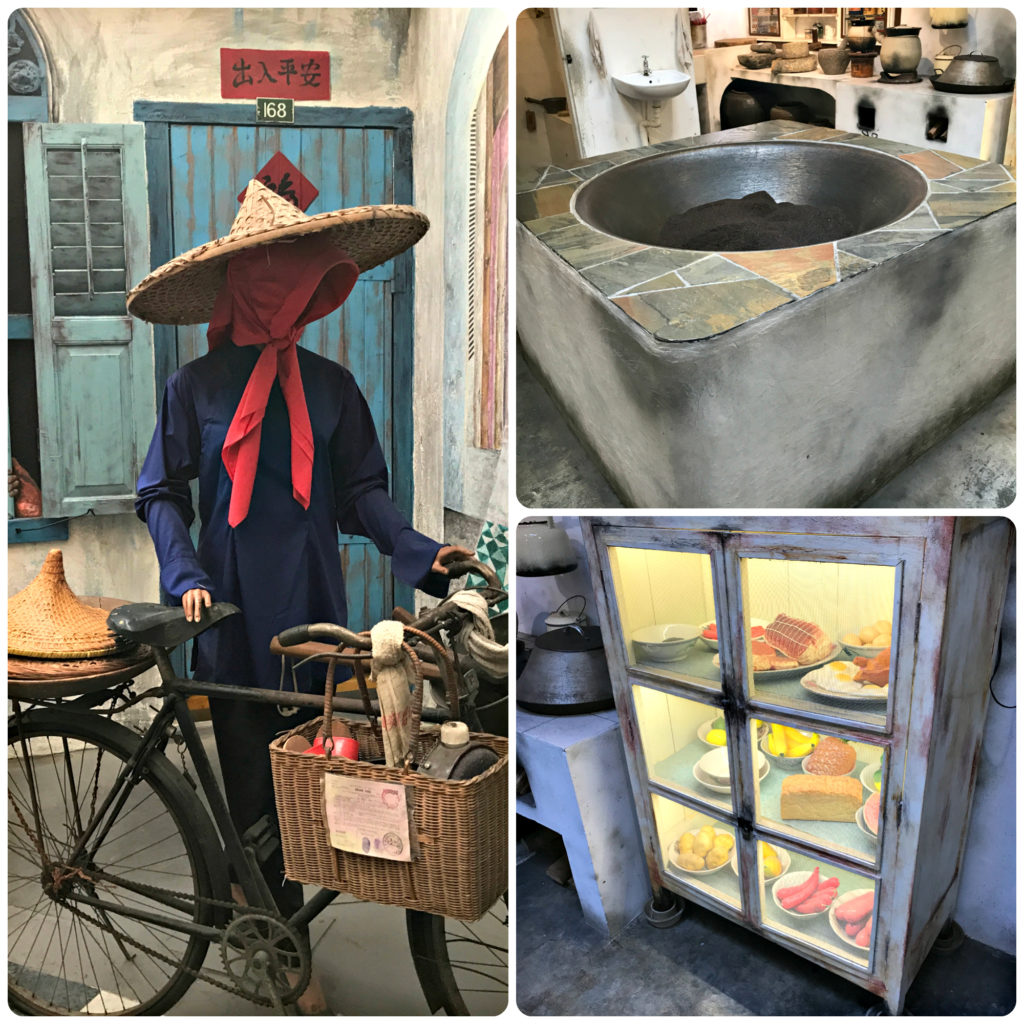
Herbal Tea Museum
However, I was pleasantly surprised. There were exhibits telling the story of the famous household brand of Chinese herbal tea since the 1940’s. Did you know that there is a selection of 24 types of herbs used to brew herbal tea?
Dr Ho was the creator of the health-giving Ho Yan Hor tea starting off selling the tea at a little road side stall. There was also great exhibits set up to replicate how they lived and how the tea was made.
Free tea tasting after wandering around the museum was an added bonus. This was free to enter and we were pleased we took the time to visit.
Han Chin Pet Soo (Hakka Miner’s Club)
Right next door to the Herbal Tea Museum was Han Chin Pet Soo. This is the site of the original Hakka Miner’s Club originally established in 1893.
The Hakka people migrated to Malaysia to work in the tin mines. Many of them spent time at the club, along with the prostitutes (brought over from Japan), gambling and smoking opium.
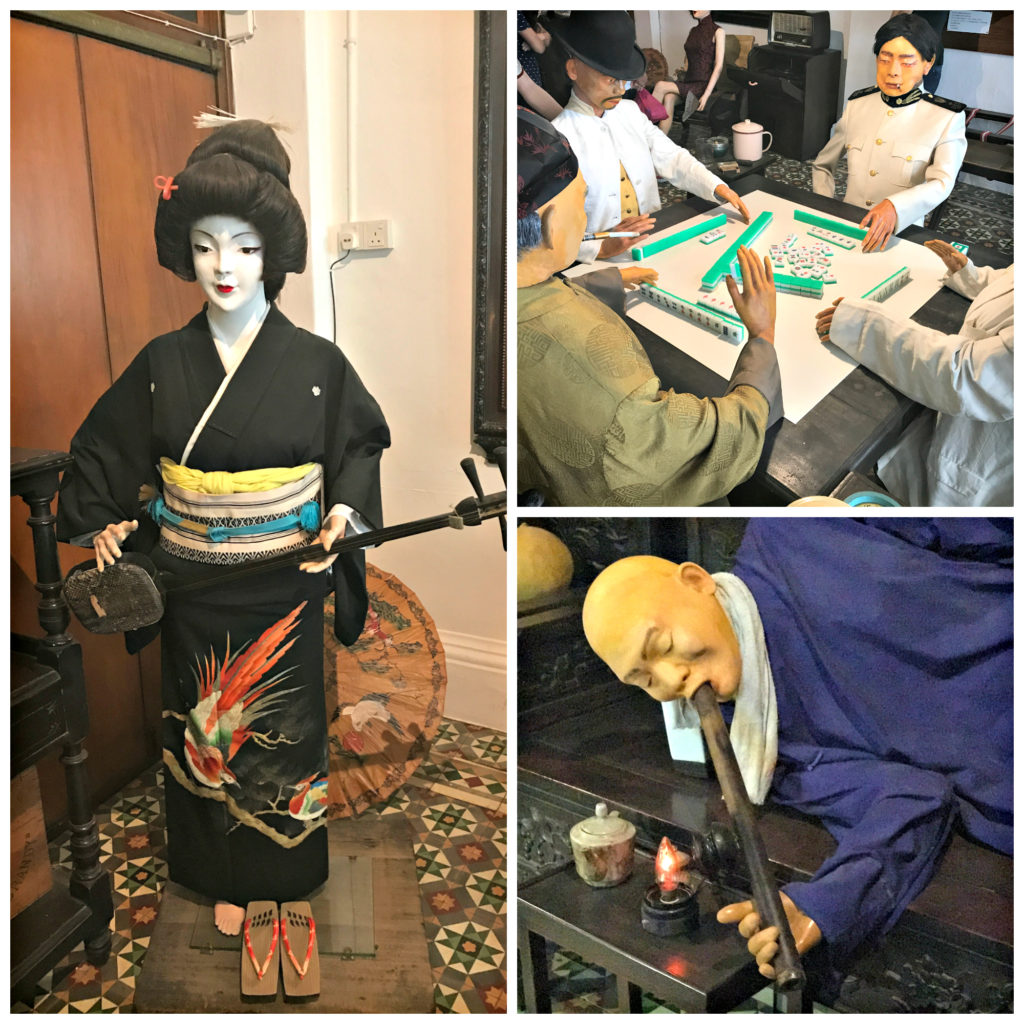
Prostitution, gambling and smoking opium was common place at the Hakka’s Miners Club
There was a free guided tour around the original building which is set up as a museum. Interesting tales told here – and all for a donation which made it great value for money.
Kellie’s Castle
We enlisted the services of a private driver for the day (through our guest house host). We don’t usually use this option for sight seeing but we wanted to just see a couple of things outside the town boundaries. All the other package tours included attractions that we weren’t so keen on seeing. This was a better option. We set off at 10am and returned at around 3pm and it cost us $23nz so money well spent.
William (Will-I-am – so he called himself) turned out to own the local pizza shop and we were to be his first tourists he had taken out and about. The usual recommended guide was busy so we got William who spoke good English and grew up in the area.
Well it turned out that he had never been to any of the attractions that we were wanting to see. He was seeing them all for the first time along with us. After a few wrong turns, plenty of laughs and some conversations about local life, we ended up at Kellie’s Castle.
We were fascinated with this unfinished castle which is supposedly haunted.
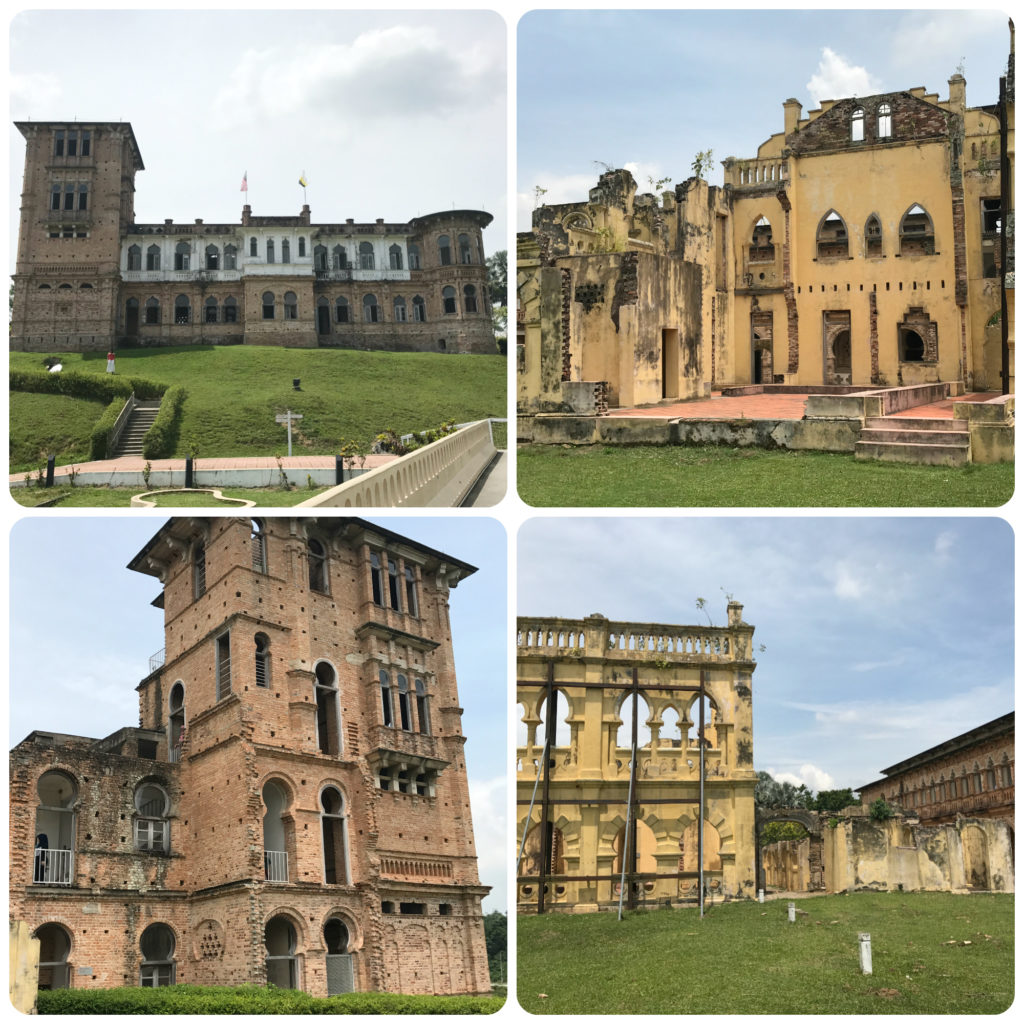
We didn’t see any of the ghosts of Kellie’s Castle
It was built by a Scottsman called William Kellie Smith who travelled to Malaysia in 1890. He started planting rubber trees and dabbled in the tin mining industry. He eventually purchased 960 acres of land for his rubber tree plantation.
His wealth grew and in 1903 he returned to Scotland to marry his sweetheart Agnes.
They had two children and it was after the birth of his second child (a son) that he started the construction of the castle as a symbol of love for his wife (a bit like the Taj Mahal) in 1915.
Because of his fascination with the Hindu religion and India, he incorporated much of the architecture into to his new home. Bricks and tiles were imported from India.
The castle was to have the first elevator in Malaysia, travelling from the roof down to the underground tunnels. Unfortunately this elevator was to be the death of Kellie. As he was travelling to Britain to purchase it, he became struck down by pneumonia and died at the age of 56 in Portugal.
In the end Kellie’s Castle was never completed. Agnes his wife packed up and left Malaysia, sold the castle and neither her or the children ever returned.
Apparently Kellie’s spirit has been seen pacing at night in the 2nd floor corridor. His daughter Helen has also been seen wearing a white blouse and curly hair, haunting her old bedroom. Phantom smells of incense and spirits have been reported in the horse stables.
We neither saw, smelt nor felt any of the above but found it interesting exploring all the rooms and hidden passageways of this old castle.
Kek Lok Tong (sometimes spelt as Kek Look Tong)
Translated, this name means Cave of Ultimate Bliss (or Great Happiness). This might be why it’s the most visited out of all the splendid limestone cave temples situated in the area of Ipoh.
The cave has been used as a place of worship since 1920 although parts of it was excavated for iron ore mining.
Although it is well visited, we did not feel that it had been ruined by commercialism. We have seen so many natural caves that have literally been ruined by gaudy paintwork on the walls, tacky decorations, ornaments and stallholders selling all sorts of junky trinkets.
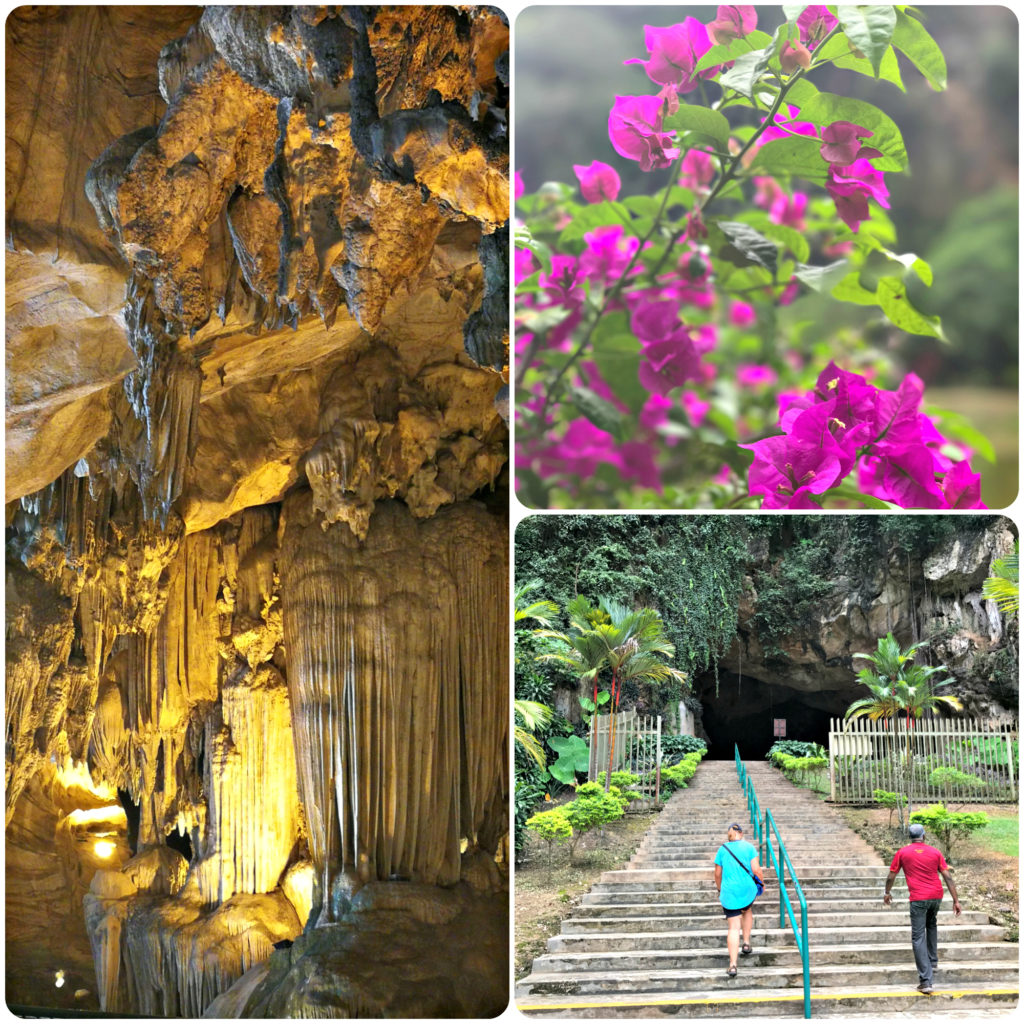
There was none of this, rather the interior of the cave has paved marble tiles on the floor and some of the walls. The roof and upper walls however remain in their natural state. There are some pretty impressive stalactite and stalagmite formations.
Steps lead down from the rear of the cave to a walking path around two lakes and through some peaceful gardens.
Summary
We were so pleased that we stayed in Ipoh, particularly in our little restored Chinese Shophouse. It made a difference to be fully immersed in the oldest part of the town, surrounded by so much history.
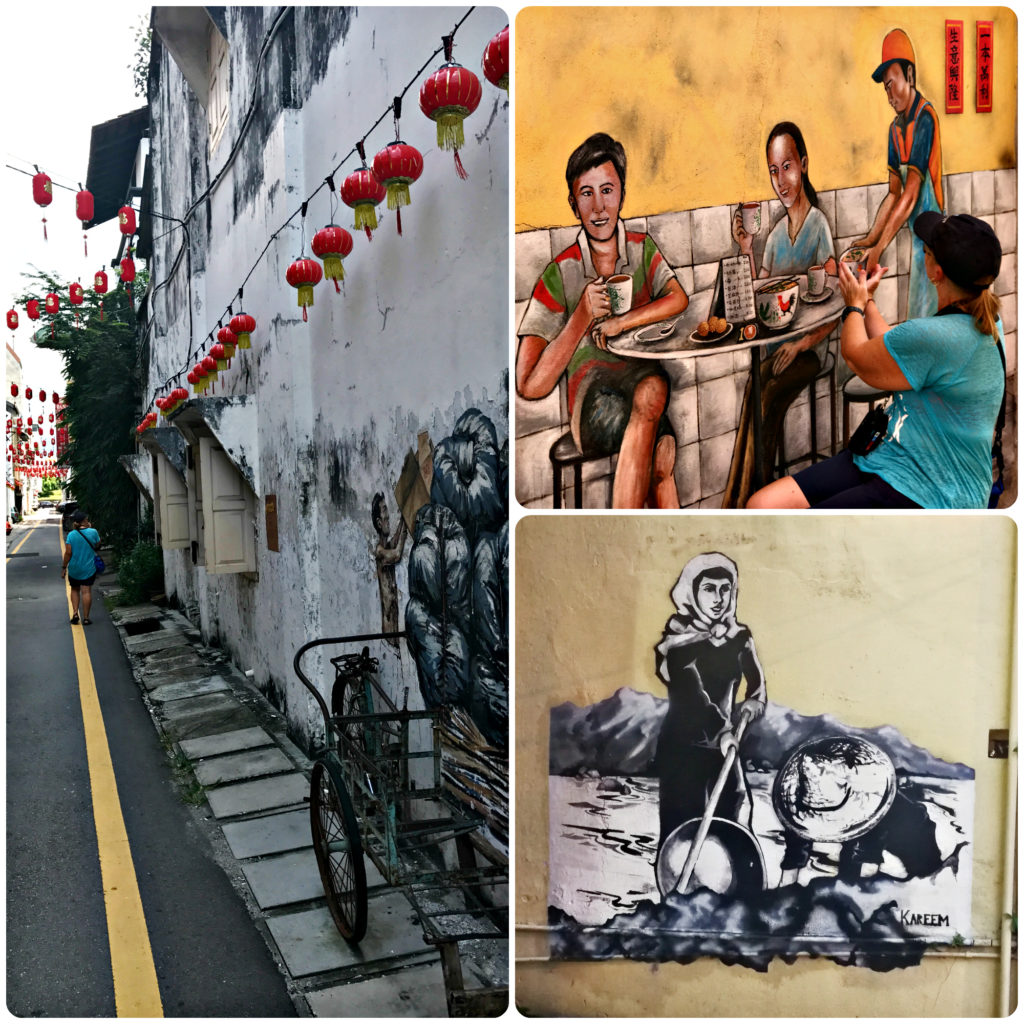
Ipoh, with its burgeoning street art, colonial style grand railway station and town hall has so much to offer. Ipoh is starting to realize that they have something special to offer and is worth more than a couple of night’s stay.
Click on the link below for a video on our highlights of Ipoh.
